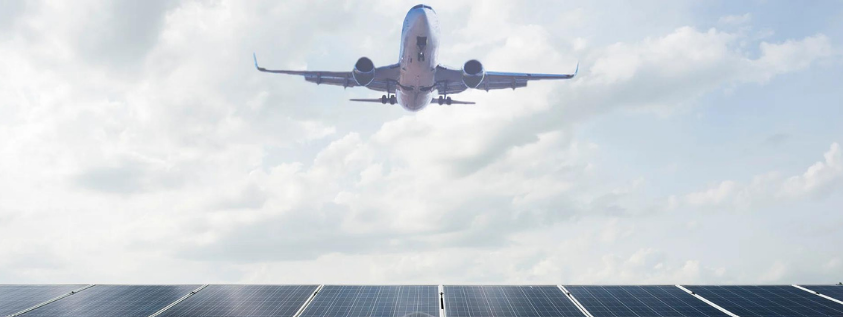The aviation industry has been working for years on a way to reduce its impact on the environment. The focus is often on aircraft and their fuel, but to reduce the industry’s carbon footprint, airport environments must also be made more sustainable.
According to a study by Amadeus, travellers believe that sustainability and personalisation of service will be the two main factors impacting the airport industry by 2025.
A MORE SUSTAINABLE FUTURE
To make the industry more sustainable, airports are turning to renewable energy. Cochin International Airport in India claims to produce 100 per cent of its energy from renewable energy by installing a large solar panel on the airport buildings and surrounding land, an idea that other airports can emulate.
Apart from reducing the emission of polluting gases, it is also important to consider the ecosystem. Airports are large structures that occupy a large space, which is why “managed green growth” is relevant. This concept refers to the growth of airports with an environmental limit, but still with economic growth. This should not be seen as a growth limit for airports, but as a stimulus to innovate and advance as a society. To address biodiversity impacts, many airports have adopted green roofs and extensions to gardens and green spaces within the building boundaries.
While the focus is on airports and aircraft, we must also move forward as a society and create a more sustainable tourism and business model. A public transport model for accessing airports is also an indirect method of reducing the environmental impact of the industry.
AENA TOWARDS SUSTAINABLE AIRPORTS
To reduce the carbon footprint at airports, AENA has drawn up a Climate Change Strategy plan where, for example, the airport manager includes a photovoltaic plan where it is committed to renewable energies and imposes the objective of generating 70% photovoltaic energy to self-supply its airports.
AENA has also committed to reducing gas emissions by joining the Netzero2050 ACI Europe initiative, which aims to achieve carbon neutrality at the main Spanish airports by 2050.
All the initiatives that are emerging to renew the aviation industry are an indicator of the will for growth and change. Aviation responds to social concerns towards the sector and this translates into constant improvement. Managers, companies and administrations are working to continue to connect travellers and their destinations with our planet.
